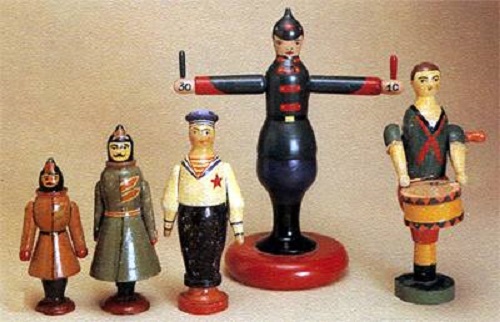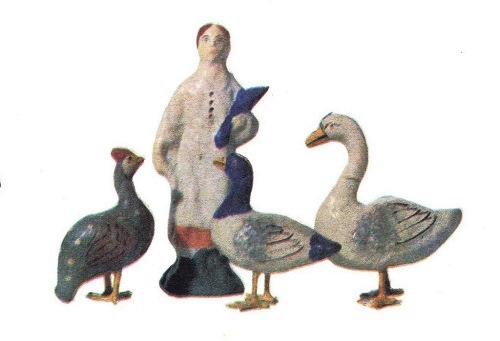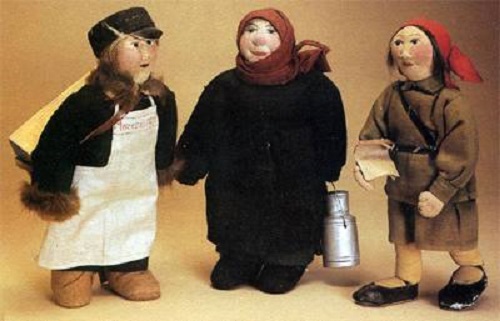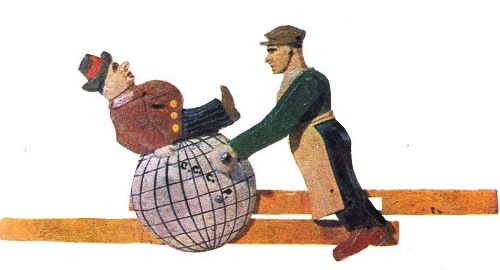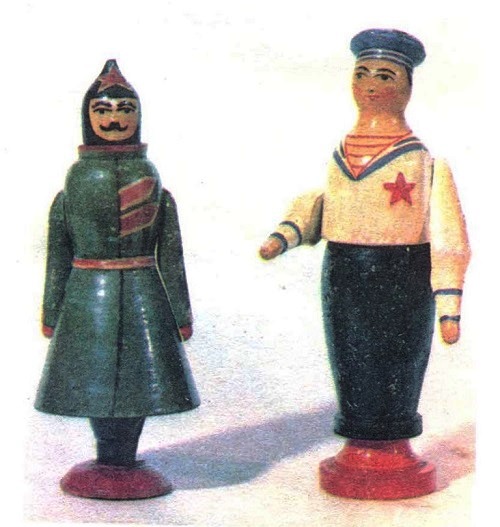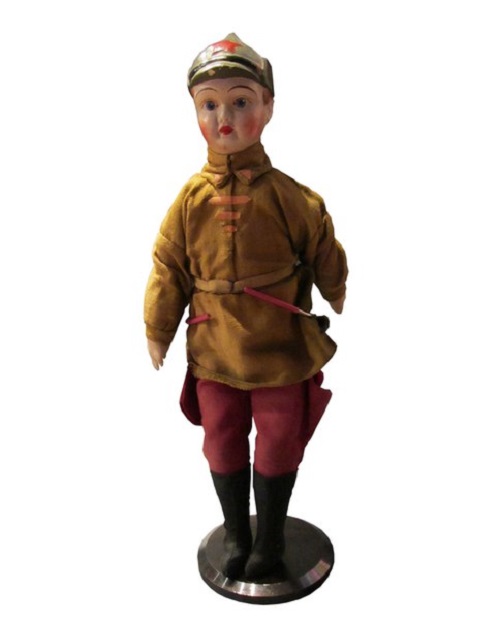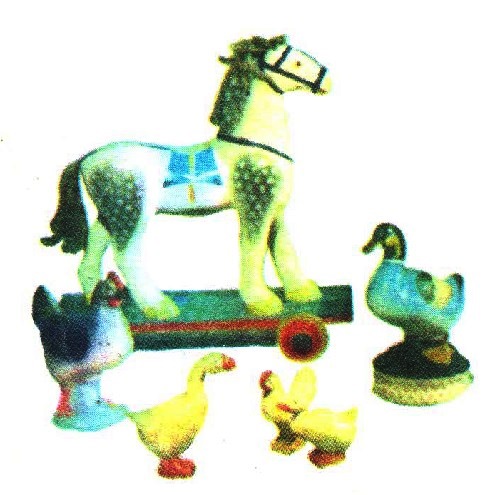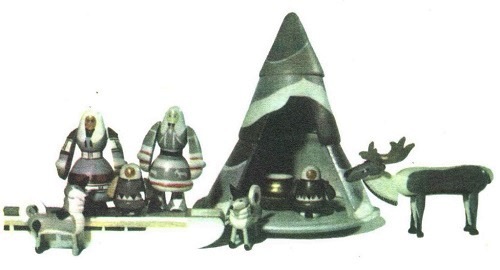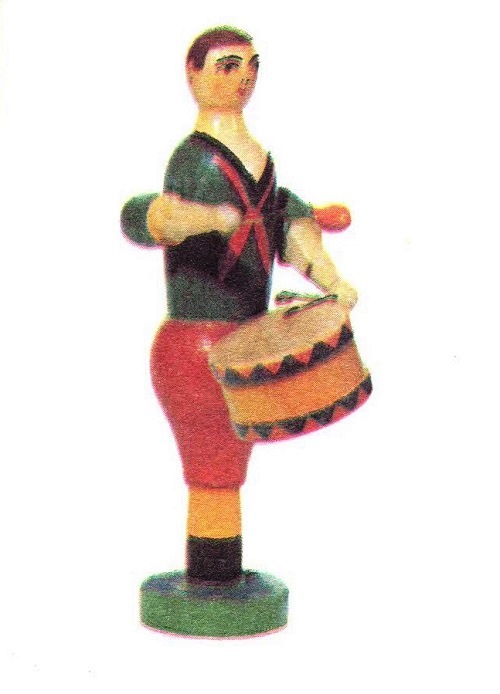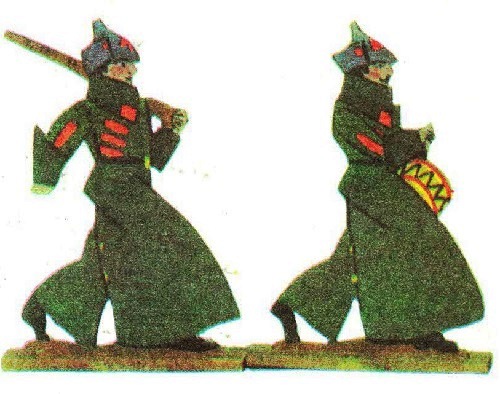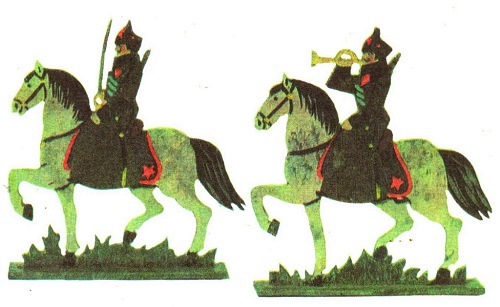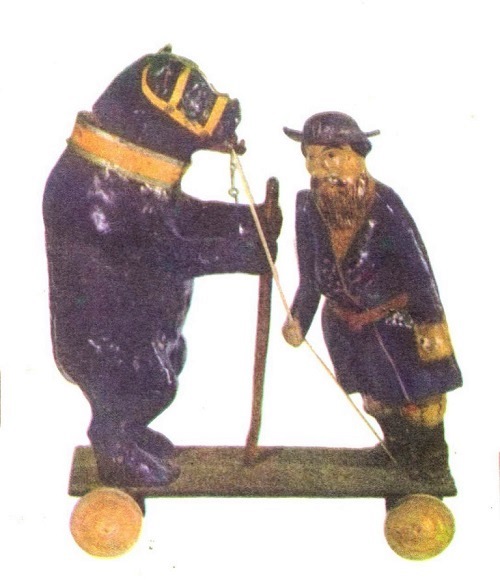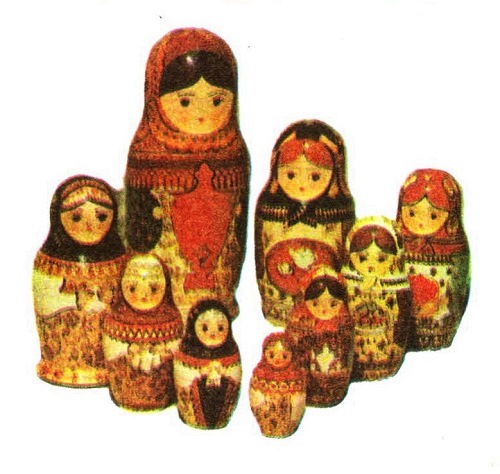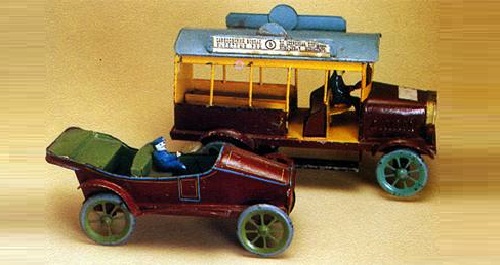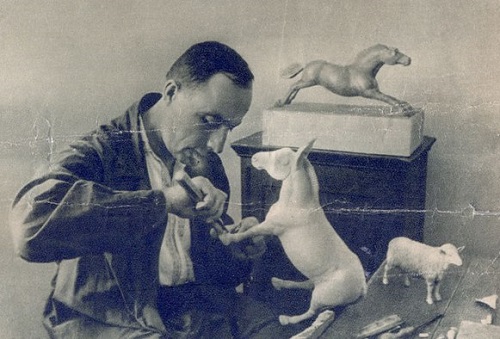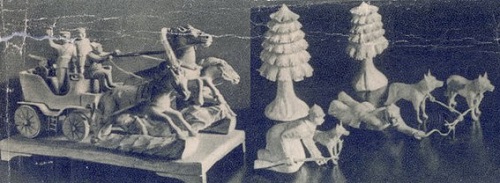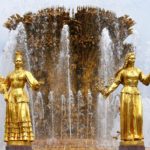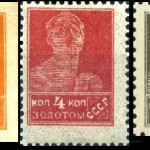Revolutionary Era First Soviet toys
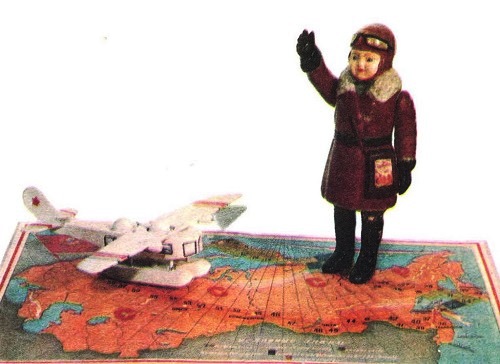
Revolutionary Era First Soviet toys. Pilot. Aircraft. Board Game ‘Following the path of heroes’. 1930s
Revolutionary Era First Soviet toys
Immediately after the revolution, the need for a toy has become a requirement of life. But in the country, fighting on the front, and then selflessly restoring the destroyed economy, there were not, and could not be companies that produced such products. It is no coincidence one of the first government regulations partially permitted free trade in toys, among other handicrafts. In the 1920s and even the 30s in different parts of the USSR, especially in the provinces, the most common and affordable remained homemade toy. It was made for and by the children themselves, as well as single artisans, selling their simple goods in the markets and fairs. Living in the distant cities and villages, they kept folk art features in their handmade products.
Toy Museum in Zagorsk holds a unique collection of exhibits of 1920-1930s. The soldiers, workers, sailors, pioneers, workers in scarlet headscarves – now these dolls have become a kind of relics of the Soviet revolutionary era. Here – Sportswoman in a white shirt. Its straight, firmly and confidently set figure with its head thrown back a little, in its own way reflects the cult of youth, health and beauty, worshiped in the great art of Soviet artists A. Deineka and A. Samokhvalov. And very different facets of life – everyday, prosaic – we reveal in the toy horses, harnessed to carts and sleighs, gramophones and coal irons, water pumps, fire-tower … The first Soviet toys are ambiguous in terms of art. We see in them the manifestation of naturalism and modernist style, the impact of the silent cinema. Sometimes it’s just a renovated pre-revolutionary samples in the spirit of Christmas cards.
Yes, the creators of toys looked back, but the important thing is that they boldly used the sharp and dynamic language of revolutionary art: from propaganda porcelain to the festive decoration of towns and demonstrations. For all the diversity of artistic searches, product was characterized by unity of style, wholeness. This is largely due to the folk traditions.
Revolutionary Era First Soviet toys came into contact with folk traditions. For 10-15 years, many of them appeared in Moscow and the Moscow region, Leningrad, Kirov, Gorky, Vologda, Novorossiysk, Krasnodar, Simferopol, Ufa, Achinsk, Biysk, and even at the edge of Soviet Russia – Vladivostok. In those difficult years, when the country lifted heavy industry, these cooperatives were a numerically small and weak companies. Sometimes they did not have the necessary equipment and facilities. It was especially hard with the raw material. In the production were used tin cans, scraps of cloth, sawdust, paper, plywood, cardboard, plaster, wool, straw and even hemp – in short, everything at hand. In this critical situation the toy-making workshops appealed to the invaluable experience of Russian folk toys. Especially active it was used in areas of the former fisheries: Semenovo of Gorky region, Kirov, Gzhel and others.
In Zagorsk, the former Sergiev Posad, residents have long carved wooden toy, molded from the mastic and papier-mâché, sharpened on lathes. In the 1920s there still produced famous Sergiev horses – rolling, singles, pairs and triples; made jumping Pagliacci – flapping the plates, with drums and bells; bears, big and small; ducks, roosters, parrots; toy kitchen tableware, etc. Repeating the usual assortment, toy-making artels and individual artisans preserved local art tradition.
Who are the authors of these samples? Sometimes the artists, but often workers and artisans. We do not always know their names. But we know that they were actively involved in the typical for that time competition for the best toy. From their environment appeared the toy-inventors, which were rare.
Revolutionary Era First Soviet toys
The cultural situation of those years not always favored the development of folk traditions. Then some mistakenly believed that the new can be built only once and for all having discarded the old. Many values were understood false: for example, a fairy tale, which (fortunately not all) have been excluded from the children’s goods, Christmas tree (its right, too, were soon restored). And the folk toy sometimes was seen as a relic of the past … But it is folk traditions the first Soviet toy was strong with. Look closely, as in its artistic charm, sense of time, shaped meaningfulness. It is a pity that today the mass toy industry has lost the precious quality.
